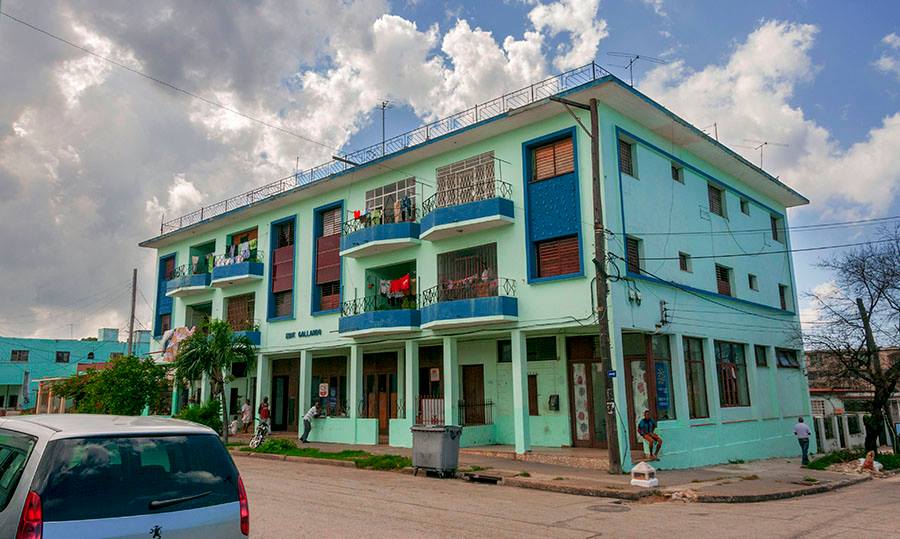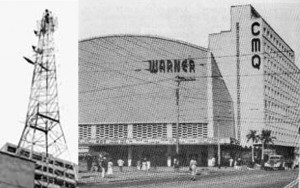LA HABANA: ‘La Avenida de los ARTISTAS’ y uno que ya olvidamos
¿Sabe usted que en el reparto Alturas de San Miguel del Padrón hay una calle que lleva el nombre de Avenida de los Artistas? Esa barriada habanera comenzó a poblarse en 1950, pero no fue hasta 1952 que figuras de la radio adquirieron terrenos a fin de edificar en sus predios.
Uno de los primeros fue el poeta José Ángel Buesa, muy vinculado, como escritor, al medio radial, que fabricó su vivienda y fue a vivir allí en compañía de su madre. Llegó después a la misma calle Vicente Morín con su familia, y le siguieron Paco Lara, Emilio del Mármol, Humberto de Dios y el popular locutor y animador José Antonio Alonso, que edificó una casa para su madre y su hermana. Llegarían después otras figuras de la radio. Fue por eso que Morín pidió al propietario del reparto que diese a esa vía el nombre de Avenida de los Artistas, denominación que mantiene pese a que, con la inauguración del reparto Monterrey, muchas de esas figuras se instalaron en la nueva urbanización o se trasladaron a otros lugares.
Vicente Morín, el sujeto que dio nombre a la Avenida de los Artistas en el reparto Alturas de San Miguel, cantaba, con diez años de edad, en la Catedral de La Habana. Tenía una magnífica voz de tenor, pero la vida lo llevó obligado por otros rumbos y tuvo que trabajar como camionero para librar la subsistencia. No por eso dejó de cantar. Lo hacía para sus amigos y, sobre todo, mientras manejaba hasta que logró al fin comenzar formalmente sus estudios. Se graduaría, en 1925, con notas de sobresaliente, en el Conservatorio de La Habana.
A partir de ahí fue la suya una carrera exitosa. Cantó con Rita Montaner y formó parte de las compañías de los maestros Ernesto Lecuona y Eliseo Grenet. Hizo giras por toda la Isla y numerosas presentaciones en el exterior. Integró los elencos de los teatros Alhambra y Martí. Con Moisés Simons viajó a España para el estreno de su zarzuela El collar de la Merced, y regresó a Cuba tras la caída de la monarquía española, sin que la obra llegara a estrenarse. Meses después (1932) el maestro Gonzalo Roig lo contrataba para que interpretara a Leonardo Gamboa en Cecilia Valdés, en su estreno mundial que tuvo lugar en el teatro Martí y que, con Caridad Suárez en el protagónico, se mantuvo durante treinta y siete noches consecutivas en cartelera.
Años después Morín conocería a Amado Trinidad que, en los inicios de aventura por el medio radial y antes de su traslado a La Habana, era el propietario, en la ciudad de Santa Clara, de la emisora CMHI Cadena Azul. Trinidad le escucha cantar guajiras y puntos cubanos y le propone un contrato. Quiere que Morín interprete las décimas y guajiras de los episodios de Pepe Cortés, un bandolero romántico y sentimental que, a manera de Arroyito en la vida real, roba a los ricos para repartir el botín entre los pobres, y monta un caballo de nombre llamativo, Relámpago.
La serie comenzó a salir al aire el 26 de agosto de 1939. La escribía Aramís del Real y las décimas las componía el después muy célebre Clavelito, el del agua magnetizada y «pon tu pensamiento en mí», en tanto que Morín, que también actuaba en el episodio, escogía la tonada con que las interpretaría. Pepe Cortés se presentaba así: «Yo robo a cualquier hora / y lo hago con placer, / porque es para proteger / al que sufre y al que llora, / al que la fiebre devora, / al que está desesperado, / al que vive abandonado / en la vida y los excesos, / para proteger a esos / yo robo al acaudalado».
Morín no haría hueso viejo con Amado Trinidad. Inconforme con su salario, regresó a La Habana contratado por la CMQ para participar en programas de corte campesino como El Guajiro Solitario, que protagonizaba Otto Sirgo, y, en Rincón Criollo, en controversias con Clavelito y Coralia Fernández.
La radio iba organizándose cada vez más en Cuba y surgió en CMQ la necesidad de crear la plaza de operador de efectos manuales como parte de la estructura de los programas. Morín aceptó el reto. Escribió varios materiales sobre el tema y hasta su jubilación, en 1961, fue jefe del Departamento de Efectos de esa emisora. Todavía se utilizan en la radio cubana los aparatos que ideó y confeccionó, en su campo, Vicente Morín, el hombre que, de paso, sugirió el nombre de una avenida.
CiroBianchiRoss/InternetPhotos/www.thecubanhistory.com
LA HABANA: ‘AVENIDA DE LOS ARTISTAS’ y uno que ya olvidamos
The CUban History, Hollywood.
Arnoldo Varona, Editor
Municipio Playa en La Habana.
FOTO por Roberto Suárez — with Arturo Rodriguez.

HAVANA: ‘Avenue of the ARTISTS’ and one that we forgot
Do you know that in Havana in the Heights of San Miguel del Padrón there is a street named Avenue of the Artists ? But really this Havana neighborhood began to be filled with artist by 1950 , and it was not until 1952 that a lot of radio figures bought land to build on their land .
One of the first was the poet José Ángel Buesa , closely linked , as a writer, the radio medium , which built his house and went to live there with his mother. Then reached the same Vincent Morin Street with his family, and followed him Paco Lara, Emilio Marble , Humberto God and popular speaker and leader José Antonio Alonso, who built a house for his mother and sister . Other figures come after the radio. It was why Morin asked the owner of the cast who give to this path name Avenue of the Artists , a name that remains even though, with the opening of cast Monterrey , many of these figures were installed in the new development or moved elsewhere.
Vincent Morin, the subject named the Avenue of the Artists in the distribution Heights San Miguel , sang, ten years old, at the Cathedral of Havana. He had a magnificent tenor voice , but life took him in other directions and forced to work as a truck driver had to wage subsistence. Not why he stopped singing . He did it to his friends and especially while driving until it finally managed to formally begin their studies . Would graduate in 1925 with notes outstanding at the Conservatory in Havana.
From there his was a successful career. He sang with Rita Montaner and was part of the companies of teachers and Eliseo Grenet Ernesto Lecuona . He toured throughout the island and numerous shows abroad . He joined the cast of the Alhambra and Marti theaters. Moses Simons traveled to Spain for the premiere of his zarzuela La Merced necklace , and returned to Cuba after the fall of the Spanish monarchy, without which the work came to be released . Months later ( 1932 ) the teacher hired you to Gonzalo Roig who played Leonardo Gamboa in Cecilia Valdés, in its world premiere held at the theater and Martí , with Caridad Suarez in the title , held for thirty-seven consecutive nights in theaters.
Years later Amado Trinidad Morin would know that in the early days of adventure in the radial medium before being transferred to Havana , was the owner in the city of Santa Clara, the station Cadena Azul CMHI . Trinidad and hears him sing guajiras Cuban points and proposes a contract. Morin wants to interpret the tenths and guajiras episodes Pepe Cortes , a romantic and sentimental bandit who , by way of Arrochar in real life , stealing from the rich and distribute the booty among the poor, and riding a horse flashy name , Lightning .
The series began airing on 26 August 1939. The Real Aramis wrote and composed the following tenths Clavelito very famous , that of magnetized water and ” put your thinking of me” , while Morin, who also acted in the episode, chose the tune to interpret that . Pepe Cortes presented thus: ” I steal any time / and do it with pleasure, / it is to protect / the suffering and weeping , / that mouth devours , / who is desperate , / the living abandoned / in life and excesses , / to protect these / I rob the wealthy . ”
Morin would not make old bone with Amado Trinidad . He is dissatisfied with his salary , he returned to Havana hired by the CMQ to participate in programs such as El Guajiro cut peasant Solitude, starring Otto Sirgo , and Rincon Criollo in disputes with Clavelito and Coralia Fernandez.
The radio was increasingly organized in Cuba and came to the need to create CMQ square operator manuals effects as part of the program structure . Morin accepted the challenge. He wrote several materials on the subject until his retirement in 1961 , he was head of the Department of effects that station . Still used in the Cuban radio apparatus he devised and drew up in his field, Vincent Morin , the man who , incidentally, suggested the name of a street .
CiroBianchiRoss/InternetPhotos/www.thecubanhistory.com
LA HABANA: ‘AVENIDA DE LOS ARTISTAS’ y uno que ya olvidamos
The CUban History, Hollywood.
Arnoldo Varona, Editor






